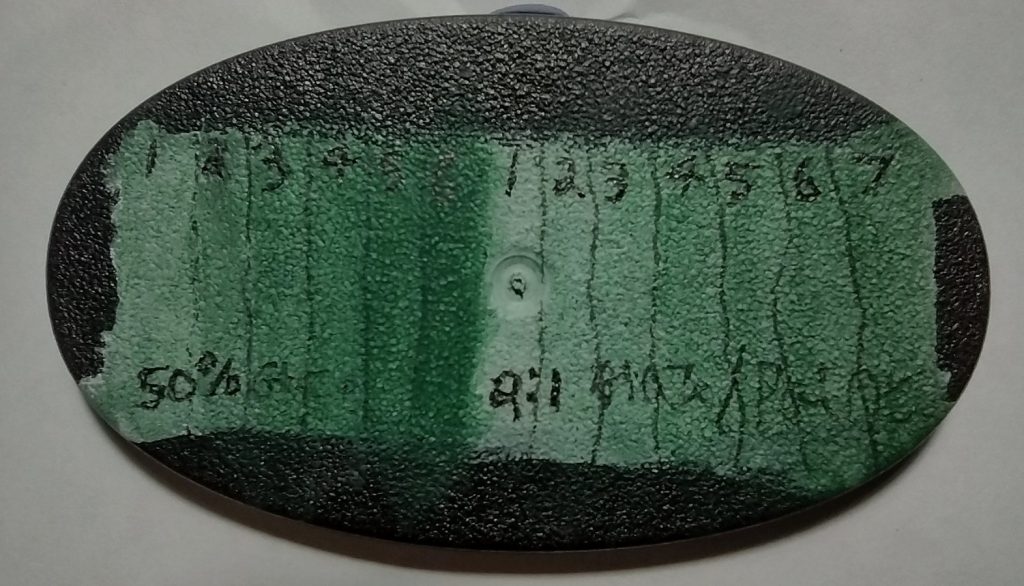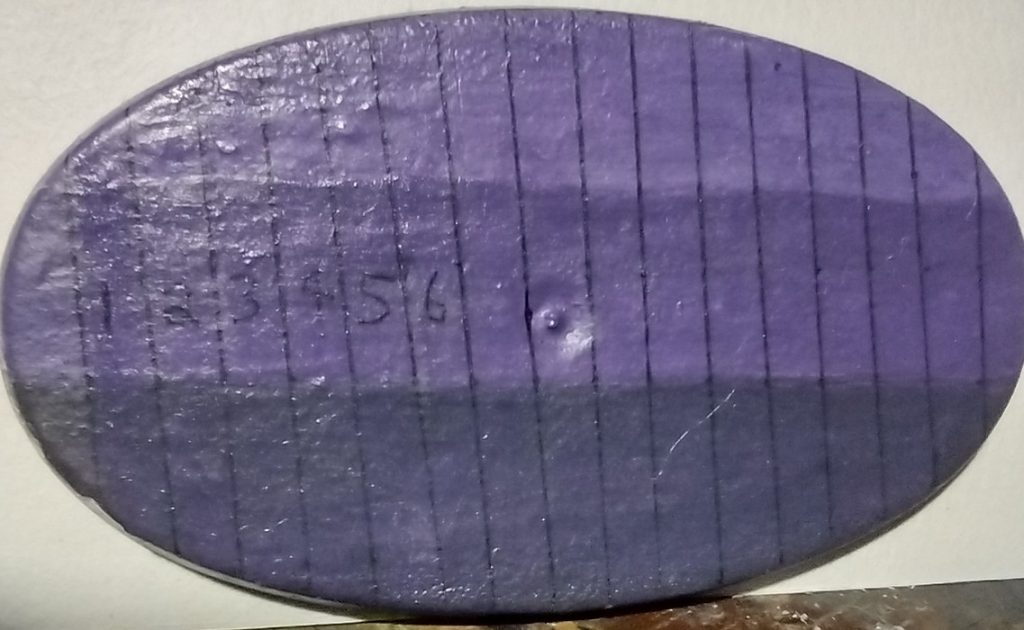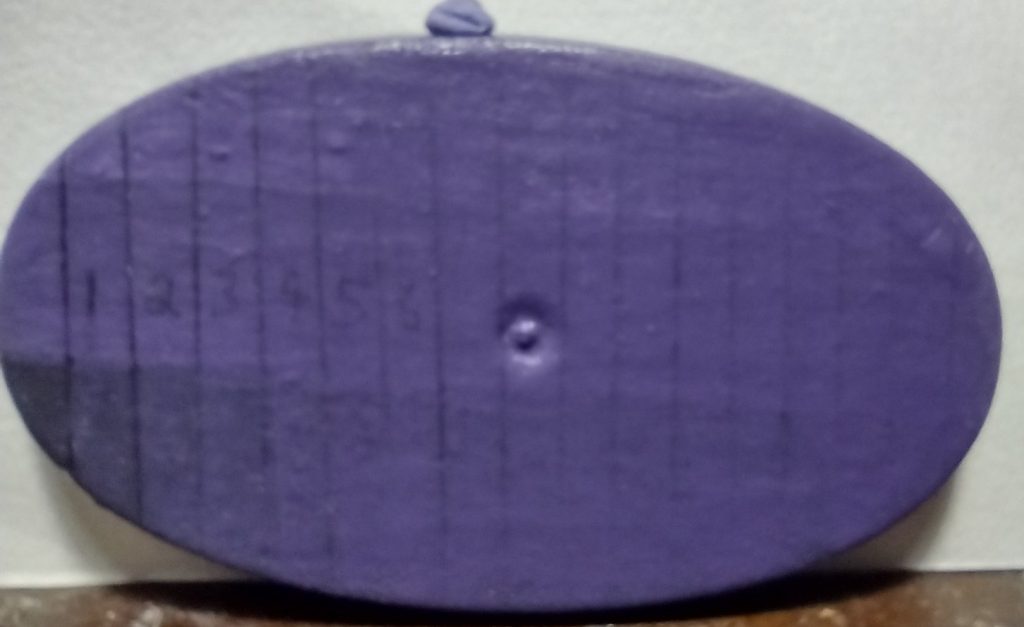(or Miniature painting: the awful truth of glazing)
One of my weak areas with miniature painting is getting the smooth transitions between shade, mid-tone and highlight.
I started painting miniatures back in the 80’s. My first attempts were awful. I had a set of AD&D Grenadier miniatures Halflings and left over enamel paints from painting model aeroplanes. So the results of some very garishly painted halflings with just basic flat colour. It wasn’t until a few years later when I started buying Citadel Miniatures and reading White Dwarf that I developed a better style of painting which essentially was prime, base coat and dry brushed highlights. This changed little apart from the addition of adding washes when Citadel/Games Workshop released their first line of acrylic inks.
Over the years I’ve tried to blend paint on the miniature with a small amount of success but it was only a couple of years ago when I picked up the miniature painting hobby again after a long break that I started looking online for painting guides.
The beginner painter of today has such a huge resource of tutorials out there on the internet which is incredible.
One technique that people use to smooth the transition between shade, mid tone and highlight is glazing.
With glazing the basic idea is to paint the mini with shade, mid tone and highlight and then thin the mid tone so that it has less opacity and paint layers of this over the top. This has the effect of evening out transition.
A practical demonstration
I haven’t had a lot of luck getting it to work so I thought of a little experiment that might give me a clue of where I was going wrong.
I painted a block of primer onto a spare miniature base divided up the base and painted layers progressively over the primer.
The first section I went with a 50/50 mix of paint and Vallejo glaze medium as advised by the bottle. Some people are champions of dilution with water but I wanted to use the glaze medium.
Then I repeated the process with a 2:1 glaze medium to paint mix on the other side of the miniature base to see how a greater dilution would look.
The results

This rather inelegantly does shows how the process works, and unsurprisingly that you need far more layers with the greater dilution. It also gives me a bit of a hint as to how many layers of glaze are needed.
I think that that was where I was going wrong, being far to impatient and expecting to see a big difference with two or three layers of glaze.
I also did a similar test using Monument Hobbies Newsh to see how that would work and it was more or less the same although Newsh is a little more viscous than the glaze medium.
The big drawback is the time you need to wait for the layer of glaze to dry before adding the next layer, the glaze/paint mix does stay useable on the palette for a fairly long time but still is going to be drying out as you are waiting for the layers to dry. You can use a wet palette, but I find that the drawback of wet palettes is that they dilute the paint and taking the control over the dilution out of your hands.
The second test
The above example is all well and good but what I’m aiming to achieve is a smoother transition. So I set up another spare miniature base with a shade tone (in this case the mid tone with a little black), a mid tone Army Painter Alien purple (because purple is the best colour and you can make all colours from purple*), a highlight (mid tone with a little white).

This was taken after one layer of glaze (Mid tone and glaze medium 50/50) had been added.

Bit of a blurry photo but I think you can see that it wasn’t a total success. All that I seemed to be achieving was making the whole strip the same colour as the mid tone, which is I suppose inevitable given the technique.
I went online and watched some more tutorials and I think where I was going wrong here was firstly, the shade to mid-tone, mid-tone to highlight jumps were too large. Also, and I don’t know where I saw the advice to use just one glaze of the mid-tone for both the transitions, you probably need to use a separate glaze for each transition.
Check back for part 2 of this series “Miniature painting: the awful truth of glazing”.
Some of good tutorials on glazing (there are hundreds though and you really are spoiled for choice).
Lyla Melv – The mini witch – Layering and Glazing made Easy
JuanHildago Miniatures – The GLAZING TRICK eBay pro-painters don’t want you to know about!
Vince Ventruella – Ultimate Guide to Glazing – HC 391
*Ok that isn’t true but I feel that purple is such a great colour that it should be true!
